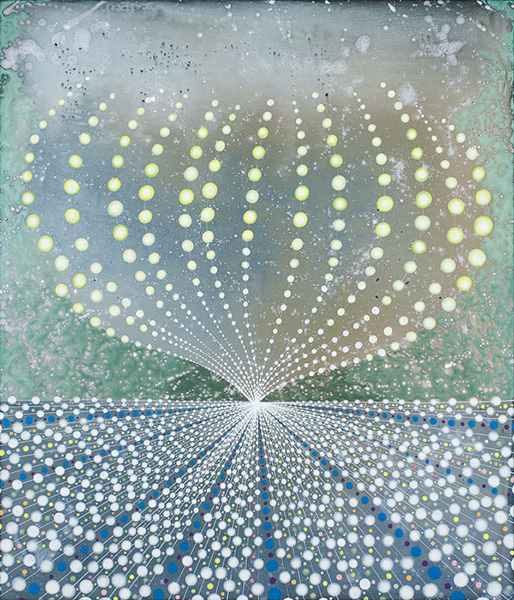
January 2, 2018
Barbara Takenaga at Williams College Museum of Art
by Scarlet Cheng
I had a chance to see Barbara Takenaga’s stunning retrospective at the Williams College Museum of Art (through Jan. 28, 2018) in Williamstown. Her meticulously painted canvases are as contemplative and cosmic as Glynn’s work is extroverted and rooted in current events and material realities. The Takenaga show begins two decades ago with her turn to a series of abstractions, and the 1998 painting Tortuca shows an array of spidery spirals overlaid on a background that shifts from light beige in the center to brown on the edges. The work was inspired by a cowlick on her dog, but she also understood that something so mundane was in the pattern of the universe. Takenaga’s body of work evokes cosmological phenomena—falling stars, the Milky Way, time-space vortices. Critics have suggested similarities to psychedelic art and Op Art, but it is completely singular. Over time her spirals were paired with dots, dots became orbs—made dimensional through color and shading—and then spirally strands of pearls would pass under and over one another. In this decade the horizon line has appeared in her work, perhaps, as exhibition curator Debra Bricker Balken has suggested, due to the death of the artist’s mother and the tragedy of 9/11, both in the same year. We see the limits of our existence, and it is the horizon.
The artist paints with acrylic on linen, occasionally on wood panel, and it is astonishing work. How does she manage hundreds of dots/orbs the same size, or even more virtuosically, in ascending and descending sizes? How does she limn these perfect undulations that whip around and connect everything? In person you can see the slight irregularities of freehand painting, and more recently in such paintings such as Green Light (2013) and Night Painting (JFM) (2016), she lets the backgrounds bleed and splatter, and allows herself to experiment with happenstance. Over that she overlays her deliberate, rhythmic patterns, which must tap into the music of the cosmos—I say “must” because we are viscerally drawn to them, as if they were keyed into our DNA.


